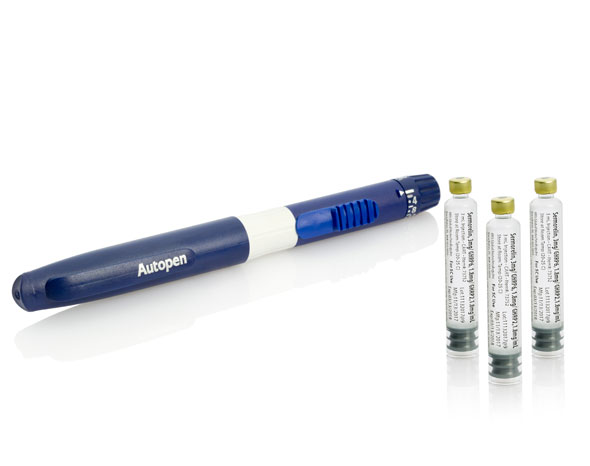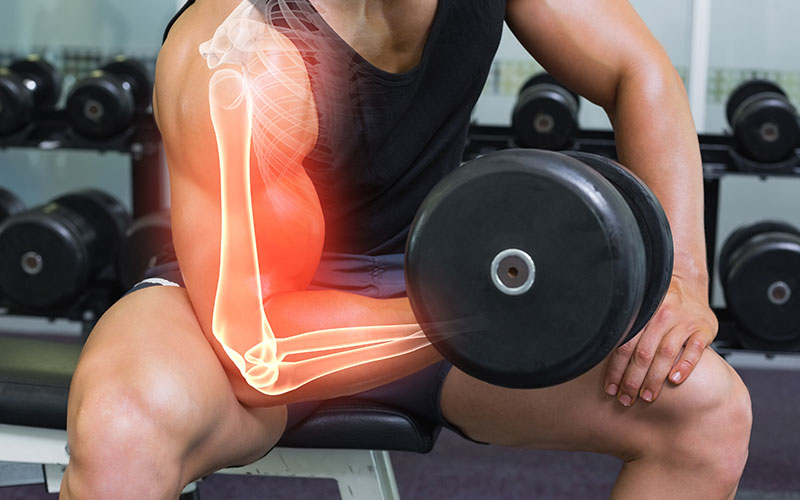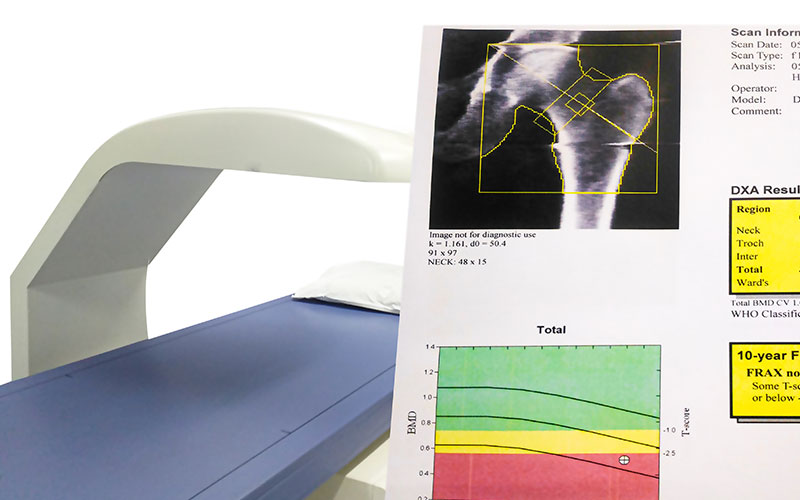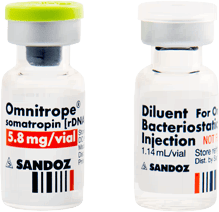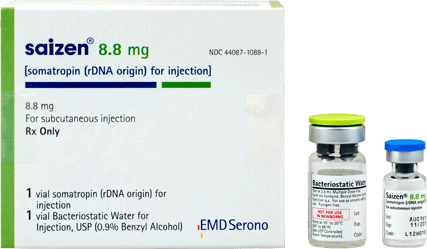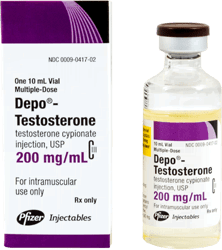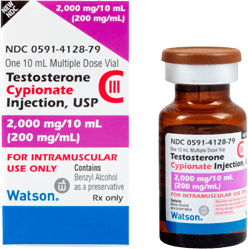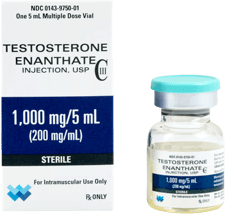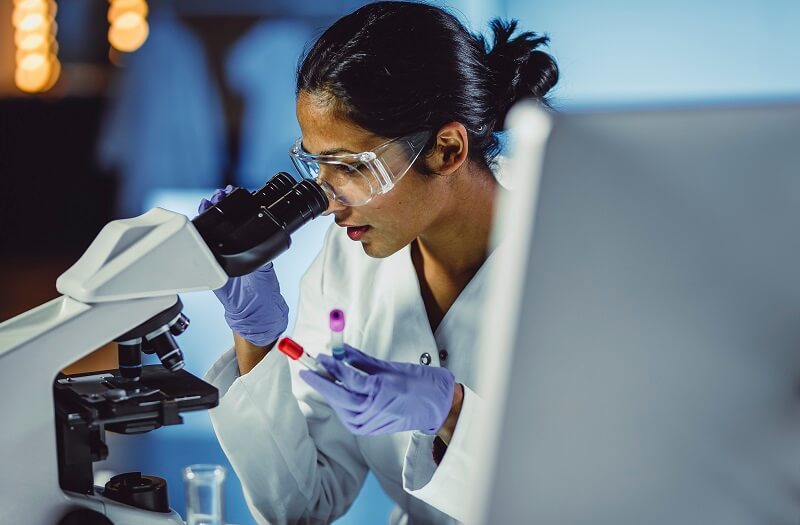- Home
- Growth Hormone
- Growth Hormone
- Growth Hormone Deficiency
- Growth Hormone Therapy
- Growth Hormone Injections
get startedThe Most Effective Hormone Replacement TherapiesTestosterone and Bone Density
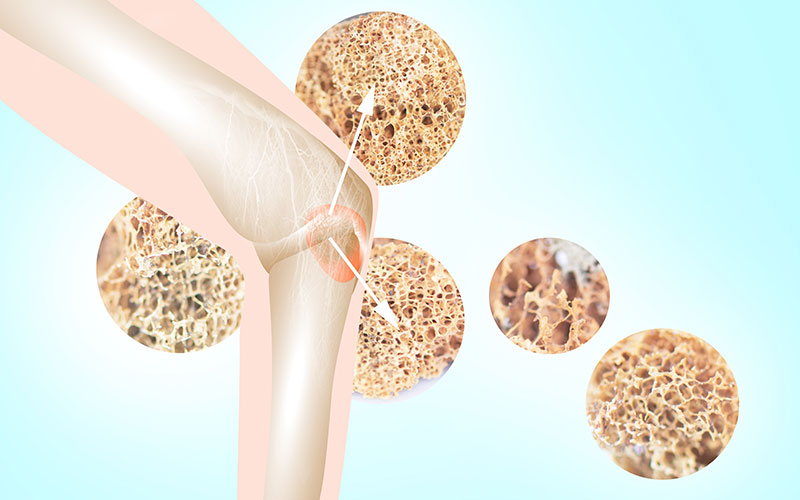
Testosterone is essential for bone growth and bone health. As men age, testosterone levels drop, putting them at greater risk of osteoporosis and osteoporosis-related fractures.
Studies have shown a clear connection between hypogonadism (low testosterone) and a reduction in bone density in older men.
As we get older, we struggle with numerous health issues, a major one being the increased risk of osteoporosis. The greatest risk to people with osteoporosis is bone fractures. Fractures are common in people with osteoporosis because it usually occurs around the same time that people start to experience balance, weakness, and other issues that can cause falls. Fractures are also harder to heal in older people, making osteoporosis fractures particularly dangerous.
What Is Osteoporosis?
Osteoporosis is a degenerative bone disease. Osteoporosis is more common in women, but it affects nearly 200 million people all around the world — both men and women. Osteoporosis is the cause of the weakening of bones that leads to fractures that are common among the elderly. Osteoporosis also makes these fractures difficult to heal, so osteoporosis fractures can be severely disabling to older people.
Which Hormones Regulate Bone Growth?
Testosterone and human growth hormone both play a vital role in bone health. Both of these hormones help prevent osteoporosis, a condition in which bones become weak and more susceptible to breaking. Estrogen is also vital to bone health, and that is why osteoporosis, generally speaking, is more of a problem for postmenopausal women than older men.
However, since testosterone levels decrease with age, the older men get, the greater they are at risk of developing osteoporosis. It is estimated that 2 million men in the United States currently have osteoporosis.
Some contributing factors are the same between genders, including diet, exercise frequency, and concurrent medical conditions. However, low and/or diminishing levels of testosterone are the most common causes of osteoporosis in men.
Testosterone Deficiency and Osteoporosis
As men age, their bone density decreases. Unlike women who are subject to osteoporosis when they hit menopause, men do not experience a sudden or rapid hormonal change but rather lose testosterone more slowly over time. Once a man is over 65, that steady decline in testosterone can lead to osteoporosis as a result of low hormone levels in the body, especially in men that have been diagnosed with low testosterone.
Studies have found that osteoporosis-related bone loss in men is closely tied to the natural decrease in the production of the hormones estradiol (a type of estrogen) and testosterone with age.
Osteoporosis affects men and women somewhat differently. In women, the rapid loss of estrogen that occurs at menopause leads to accelerated loss of trabecular bone, the spongy bone inside the hard cortical bone.
Instead of completely losing trabecular bone, men with low testosterone experience trabecular thinning. Because of this, men with osteoporosis experience slower bone loss with smaller decreases in overall bone mineral density, but over time also become at great risk of osteoporosis-related fractures.
In addition to helping to maintain or increase your bone density, testosterone, particularly when given as a treatment for low testosterone – also improves lean muscle mass. It is the body’s muscles that support and protect the bones from damage. Helping to build and strengthen muscle is another way that testosterone works to help prevent fractures in older men and women.
Does Testosterone Increase Bone Density?
Testosterone replacement therapy has been proven to increase bone density in men with low testosterone.
The recent Testosterone Trials, an effort by the National Institutes of Health to study testosterone treatment effects in 790 men aged 65 and older, found that one year of testosterone treatment significantly increased volumetric bone mineral density and estimated bone strength in men aged 65 years and older.
Does Testosterone Reduce the Risk of Osteoporosis Fractures?
In men diagnosed with low testosterone, testosterone replacement has been shown to help strengthen bones and prevent osteoporosis fractures in several ways.
Unfortunately, in men, a bone fracture is typically the first symptom of osteoporosis. Men usually suffer fractures from osteoporosis later in life than women do, though this does not mean the fractures do not carry significant risk. In fact, men are more likely to die from complications following an osteoporosis-related hip fracture than women are.
About 80,000 men break a hip each year. After a fracture, 60% of surviving men have a higher chance of suffering a second fracture. Men are also more susceptible to rib fractures due to osteoporosis than women.
Because osteoporosis does not cause pain unless a fracture occurs, and older men are likely to be suffering from bone loss and not even know it! Men who have experienced a loss in height greater than 2 inches or who are known to have low levels of testosterone should behave their bone density tested and be screened for osteoporosis.
Testosterone can help lower the risk of bone fractures by improving bone density and help to replace the bone loss typical of patients with osteoporosis. Testosterone also can help patients lose weight, which puts less pressure on bones. Testosterone therapy also helps to build muscle and ligaments, which support bones, improve balance, and strengthens the overall musculoskeletal system.
If you are over 45 years of age, there has never been a more critical time than now to learn about testosterone and osteoporosis. We know now conclusively that low testosterone is linked to an increased risk of osteoporosis and osteoporosis-related bone fractures.
Other Signs That You Could Have Testosterone Related Bone Loss
Because men over 55 who have low testosterone may be suffering from bone loss and not know it, other signs that you may have weak or brittle bones susceptible to fracture include:
- Neck or back pain: Men with low bone mineral density may experience chronic pain in their back or neck. This could be due to compression fractures in the vertebrae.
- Loss of height: A gradual loss in height can signal that the bones in your spine are weak. Over time, the vertebrae can start to thin and collapse, leading to lost height.
- Stooped posture: Another sign of osteoporosis in men is stooped posture. This is often due to weakening bones in the spine.
What Does the Research Have to Say About HGH and Bone Health?
Studies around the world are reporting the many benefits of testosterone for osteoporosis and bone health.
A 1999 paper entitled Effect of Testosterone Treatment on Bone Mineral Density in Men Over 65 Years of Age was one of the first to conclude that “As men age, their serum testosterone concentrations decrease, as do their bone densities.”
A 2021 study stated, “Testosterone plays an important role in maintaining BMD and bone health among men. In addition, many molecular mechanisms of testosterone on bone metabolism have been currently established by many experimental data.”
A 2016 study published in Clinical Interventions in Aging stated that "Osteoporosis is a condition causing significant morbidity and mortality in the elderly population worldwide. Age-related testosterone deficiency is the most important factor of bone loss in elderly men.”
And a 2017 study in the Journal of the American Medical Association (JAMA) sought to answer the question: “Will testosterone treatment of older men with low testosterone improve their bone density and strength?”
The study’s answer was: “Testosterone treatment of older men with low testosterone increased volumetric trabecular bone mineral density of the lumbar spine and estimated bone strength significantly compared with placebo.”
Other Benefits of Testosterone Replacement Therapy
Multiple studies have shown that testosterone therapy can help improve bone mass and bone density in men with low testosterone and thereby can help to reverse the bone loss of osteoporosis. Improving bone health is just one of the many benefits of testosterone replacement therapy.
In men suffering from age-related testosterone deficiency in addition to strengthening bones and reducing the risks of osteoporosis, testosterone therapy:
- Improves fat metabolism and results in more lean muscle and less fat
- Increase energy and vitality
- Improves sleep
- Increases cognitive functioning
- Improves heart health and lower the risk of cardiovascular disease
- Boosts your immune system
- Improves mood
- Increases libido and improves sexual function
FAQ
What are the signs and symptoms of osteoporosis?
There typically are no symptoms in the early stages of bone loss. But once your bones have been weakened by osteoporosis, you might have signs and symptoms that include:
- Back pain, caused by a fractured or collapsed vertebra
- Loss of height over time
- A stooped posture
- A bone that breaks much more easily than expected
What is the main cause of osteoporosis?
Your bones are in a constant state of renewal — new bone is made, and old bone is broken down. HGH is a prime mover in this process. As we age, HGH levels drop, and old is no longer replaced as well as it was when we were younger, and bone mass is lost faster than it’s created. This leads to the weakening of bones typical of osteoporosis. Osteoporosis affects men and women of all races. But white and Asian women — especially older women who are past menopause — are at the highest risk of developing osteoporosis.
How is osteoporosis diagnosed?
Osteoporosis is diagnosed by determining your bone density. Your bone density can be measured by a machine that uses low levels of X-rays to determine the proportion of minerals in your bones. During this painless test, you lie on a padded table as a scanner passes over your body. In most cases, only a few bones are checked — usually in the hip and spine.
How is osteoporosis treated?
Treatment recommendations are often based on an estimate of your risk of breaking a bone in the next ten years using information such as the bone density test. If your risk isn’t high, treatment might not include medication and might focus instead on modifying risk factors for bone loss and falls. In addition to prescription medications, hormone replacement therapies, particularly growth hormone therapy and testosterone therapy, have effectively treated or prevented osteoporosis.
How can osteoporosis be prevented?
Good nutrition and regular exercise are essential for keeping your bones healthy throughout your life. A healthy diet and weight-bearing exercise can help prevent bone loss or strengthen already weak bones. Specifically, adding more protein and calcium to your diet can help to strengthen bones. Exercise can help you strengthen muscle and bone, but it can also help you lose weight, thus putting less stress on your bones. Certain supplements like vitamin D have also been shown to improve your body’s ability to absorb calcium and improves bone health in other ways.
Now that you know a little bit more about the link between testosterone, osteoporosis, and bone health, why not take a minute to contact us and learn more about how hormone replacement therapy can improve your quality of life?
- Growth Hormone Therapy






